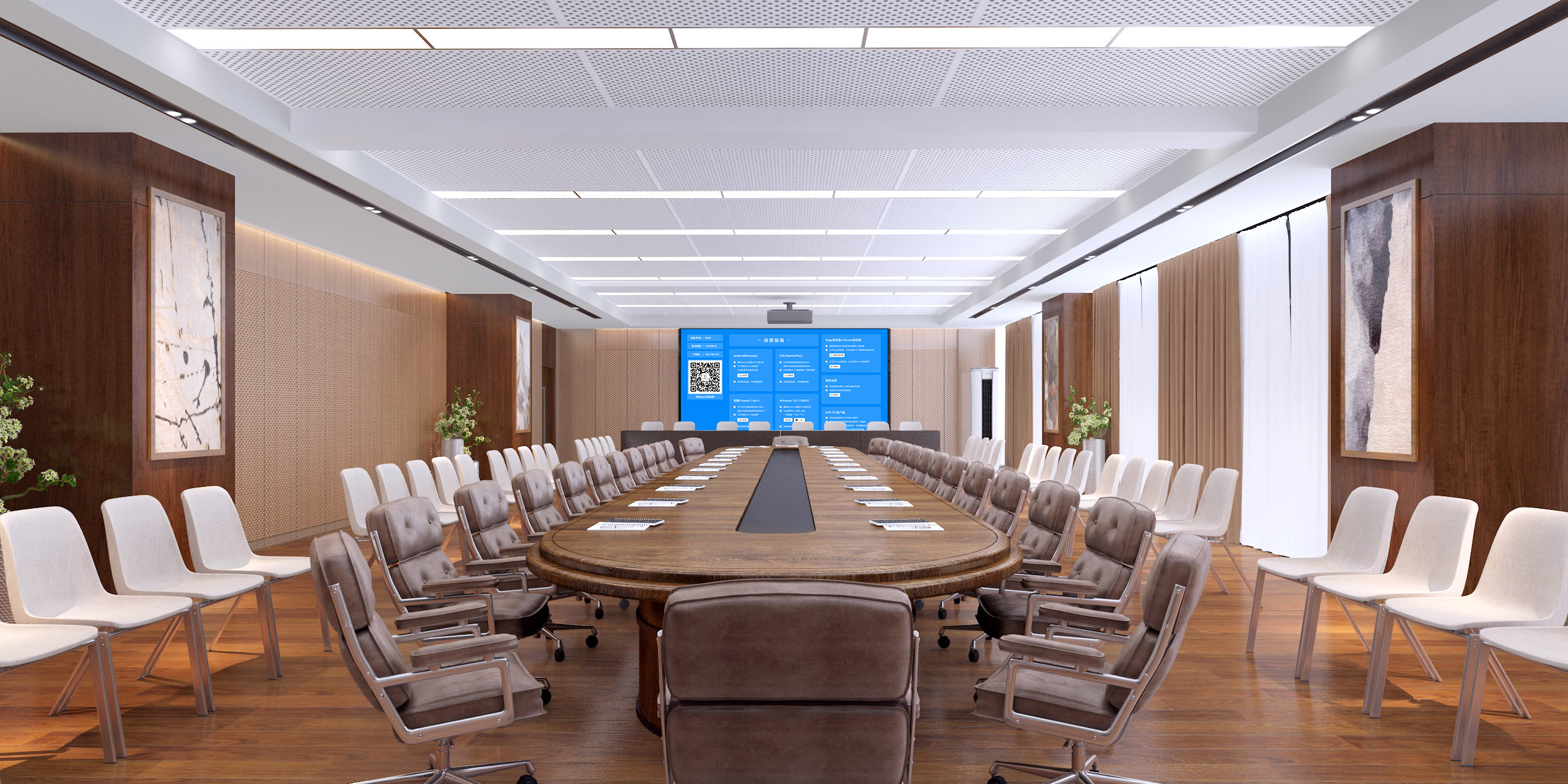Integrated Video Conferencing Rooms: A Collaboration Solution with Phone Screen Mirroring
The combination of integrated video conferencing rooms and phone screen mirroring is breaking down the spatial and device barriers of traditional meetings. With the technical support of Bijie’s screen mirroring devices, content from a phone can be quickly integrated into a meeting scenario, making local discussions and remote collaboration smoother. This creates an efficient link for all-scenario meetings.
Seamless Integration of Phone Screen Mirroring into Conference Rooms
A video conferencing room with an integrated Bijie mirroring core module allows phones to connect to the room’s equipment in 3 seconds without installing a special conferencing app. They can use the built-in mirroring function, a QR code scan, or NFC tap-to-connect. Both iOS and Android phones are stably compatible. Even older models, with the optimization of Bijie’s proprietary protocol, can avoid frequent disconnections during mirroring, and the connection success rate is consistently above 99.8%.
When mirroring, documents, data charts, and on-site photos or videos from a phone can be directly projected onto the room’s main screen and are automatically displayed in a smart split-screen view with the meeting video feed. For example, after a project schedule from a phone is mirrored, the video windows of remote attendees are automatically adjusted to a suitable position. This avoids blocking key content and allows everyone to see the screen and the status of attendees, ensuring a seamless flow of information.
Two-Way Interaction for Deeper Collaboration
With the two-way interactive technology of Bijie’s mirroring devices, the room’s touch screen can control the phone in reverse. During a meeting, a presenter can use their phone to film impromptu ideas on a whiteboard. After mirroring it to the large screen, they can directly zoom and circle key points on the room’s large screen, and these operations are synchronized back to the phone in real time. Revision suggestions annotated by remote members via the conferencing room can appear on the phone’s mirrored content in under 2 seconds. The feedback annotated by the local team on their phones can also be instantly transmitted to the remote end, making the two-way interaction feel like everyone is in the same room.
A phone can also act as a “remote controller” for the room. Attendees can adjust the large screen’s volume, switch mirrored content, and even initiate screen recording from their seats using their phones. The recorded content is automatically saved to the phone, eliminating the need for an extra export after the meeting and making it easy to quickly organize meeting minutes.
Practical Value for Multi-Scenario Adaptation
Small and Medium Local Meetings
Phone mirroring is especially flexible for team meetings of up to 10 people. If someone has a client case video on their phone, they don’t need to copy it to a computer. They can mirror it directly to the room’s large screen for everyone to watch. During a discussion, each member can film their notes or sketches with their phone and mirror them to the room in a split-screen view for a side-by-side comparison of different ideas. This avoids the inefficiency of “passing the phone around” and increases meeting efficiency by 40%.
Cross-Regional Project Discussions
When a remote team joins a meeting in a conferencing room, the low-latency technology of Bijie’s mirroring devices (latency < 30ms) comes into play. A member from the headquarters can mirror the latest product design from their phone, and a branch team can annotate their suggestion of “adjusting the button position” on the room’s large screen, and the phone terminal receives the mark in real time. A branch member can film the local market’s on-site situation with their phone and mirror it so the headquarters can clearly see the details, shortening the remote decision-making cycle by 30%.
Mobile Office Scenarios
When working remotely, you can “carry” a conferencing room meeting with you via your phone. You can use your phone at a client’s site to join a company’s conferencing room meeting and mirror a pre-prepared proposal. After the client suggests revisions, you can modify the document on your phone on the spot and mirror it back to the room in real time, allowing the team back at the office to participate in the discussion simultaneously. This avoids a second round of communication after returning to the office and greatly improves the efficiency of business interactions.
Small-Scale Training Scenarios
A trainer can mirror courseware from their phone to the room’s large screen. Paired with the room’s microphone and camera, remote trainees can clearly see the content and the instructor’s status. Students’ practice work submitted from their phones can be mirrored on the room’s large screen for display, and the instructor can annotate it on the large screen while explaining. Trainees on their phones can receive the annotated work synchronously, making the training more intuitive than simply watching a video.
The combination of integrated video conferencing rooms and phone screen mirroring, with the support of Bijie’s mirroring devices, turns a phone from a “personal terminal” into a key node for meeting collaboration. Without complex operations, it allows fragmented content to be quickly aggregated and cross-spatial ideas to be efficiently transmitted, redefining the standard for lightweight meeting collaboration.